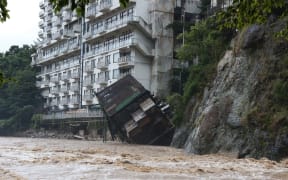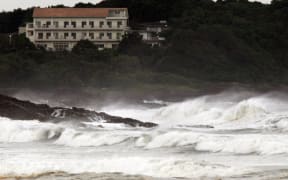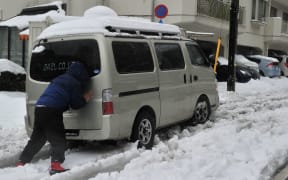Widespread flooding and landslides in north-east Japan have forced more than 90,000 people to abandon their homes.
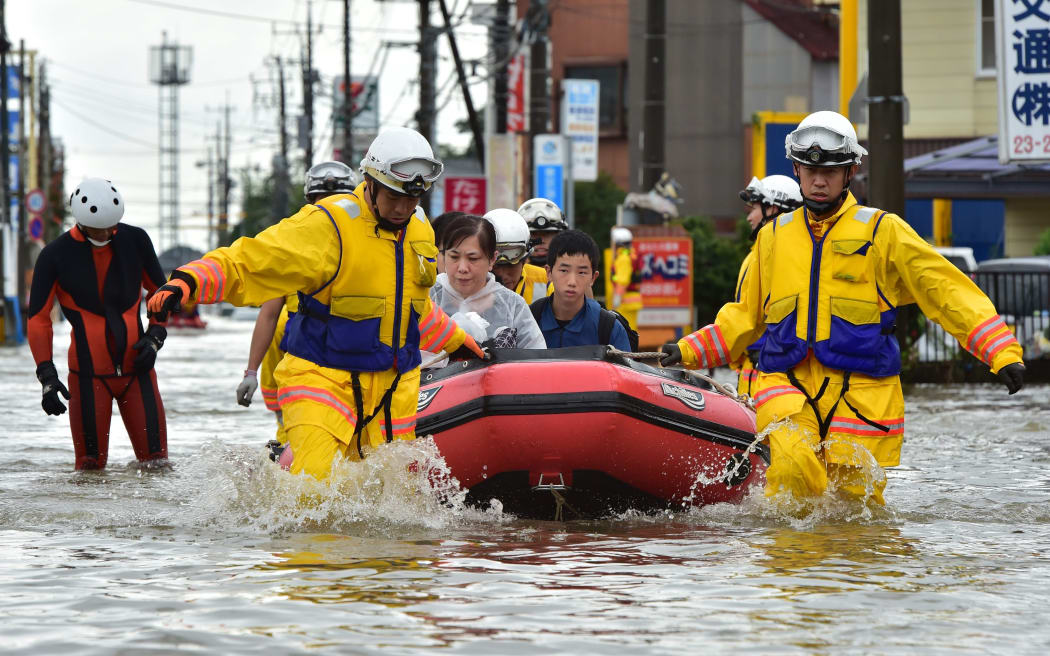
Rescue workers transport evacuees in a rubber boat through floodwaters. Photo: AFP
The city of Joso, north of the capital, Tokyo, was hit by a wall of water after the Kinugawa River burst its banks. Helicopter rescue teams have been plucking people from rooftops.
At least eight people were still missing and 100 need rescuing.
The rains came a day after a tropical storm brought winds of up to 125km/h to central Aichi prefecture.
Chief forecaster at the Japan Meteorological Agency (JMA), Takuya Deshimaru, said that the rainfall was "unprecedented" for that part of Japan.
"We can say this is an abnormal situation and there is imminent serious danger," he went on.
The hardest-hit areas have been Ibaraki and Tochigi prefectures. Japan's Meteorological Agency had put both regions on its highest level of alert.
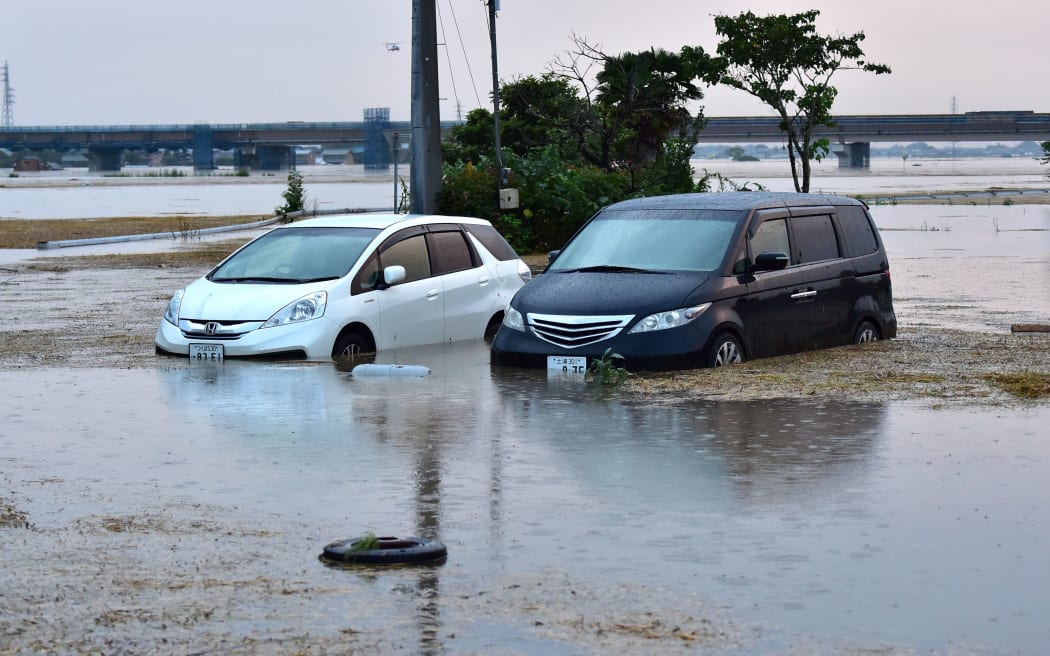
Submerged vehicles in floodwaters after an embankment of the Kinugawa river collapsed. Photo: AFP
Saori Mori, who lives close to the Tone River in the town of Abiko, told the BBC that "the water is right up to the top of the banks now".
"We have been told to pack and prepare to evacuate as soon as we are told to," Ms Mori said, adding that she and her family were "getting ready for a fast exit".
Television footage from Joso in Ibaraki showed people clinging to the rooftops before helicopter rescue teams winched them to safety.
Entire homes and cars were carried away on the torrent as the Kinugawa River burst its banks after two days of heavy rainfall. The flood waters reached as far as 8km from the breach.
In Tochigi, more than 500mm of rain fell in 24 hours in places, double the amount that normally falls there throughout the whole of September, according to Japanese public broadcaster NHK.
Parts of central Tochigi had seen almost 600mm of rain since Monday evening, breaking records.
Many other areas of eastern and north-eastern Japan had also been issued weather warnings, including Fukushima prefecture, home to the still-damaged nuclear plant hit in 2011's earthquake and tsunami.
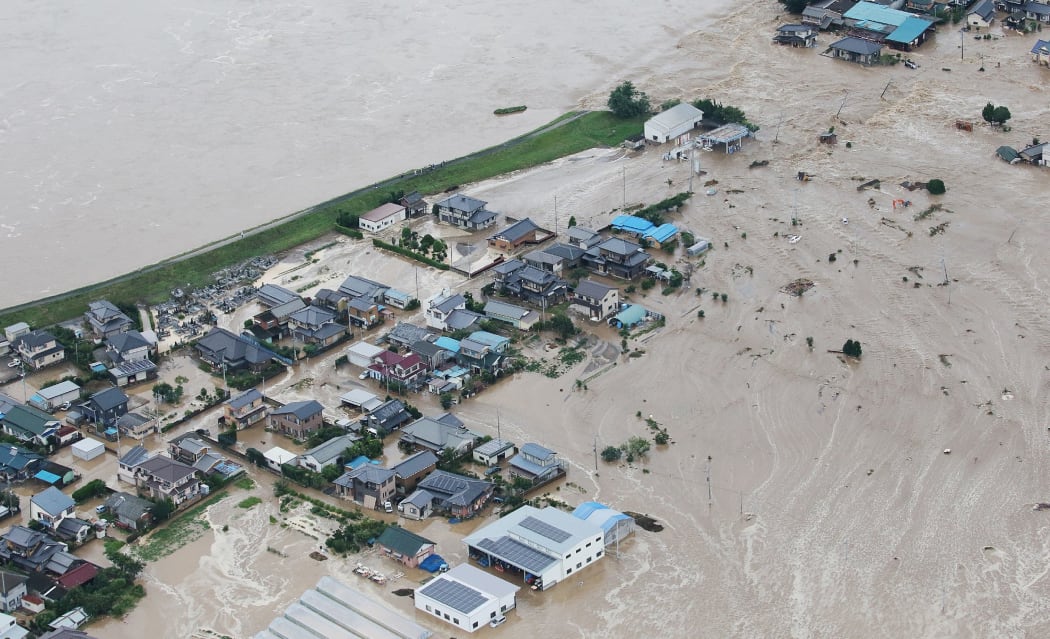
Floodwaters from the burst Kinugawa river flow into a residential area in Joso, Ibaraki. Photo: AFP
The downpour overwhelmed the site's drainage pumps, a spokesman for operator Tokyo Electric Power (Tepco) said.
Huge volumes of water, used to cool the plant's crippled reactors, are being stored at the site.
Landslides and flooding
The Fire and Disaster Management Agency said 15 people had been injured across Japan. Two were elderly women seriously injured after being knocked over by strong winds.
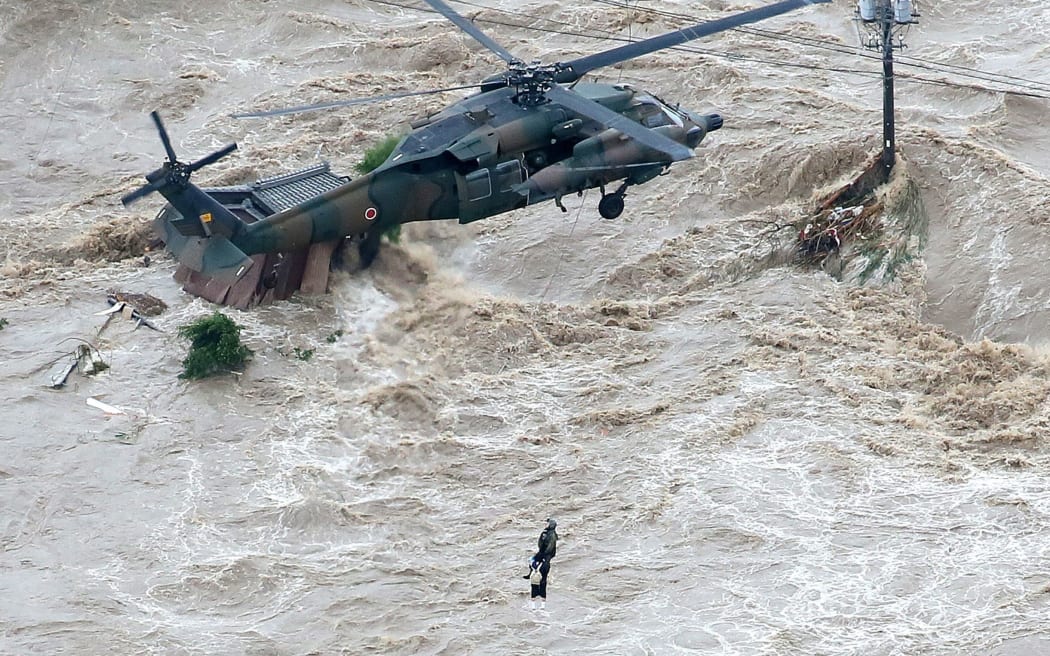
A local resident is rescued by a helicopter of the Gound Self Defense Force in a flooded area in Joso. Photo: AFP
The BBC's Mariko Oi said seven people were missing in Joso and one in Tochigi prefecture, and the authorities fear that number would rise.
She said officials confirmed 265 people had been rescued, but at least 100 remain in need of help as rescue efforts are hindered by the night time.
Some areas have had power cuts and transport was disrupted, with many air and train services cancelled or delayed. Some roads were also closed.
Prime Minister Shinzo Abe said authorities were doing their best.
"The government will stand united and do its best to deal with the disaster... by putting its highest priority on people's lives," he told reporters.
Last month, powerful Typhoon Goni hit Japan's southernmost main island of Kyushu, killing at least one person and injuring 70 others.
-BBC
